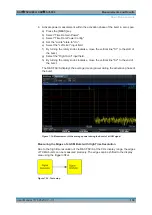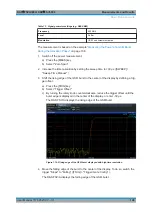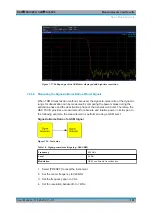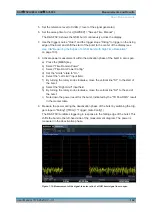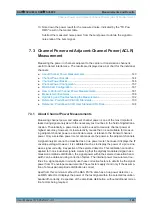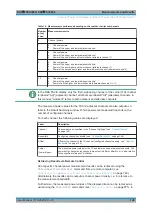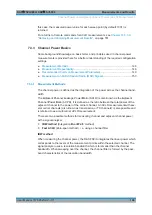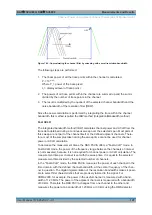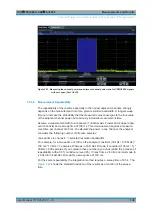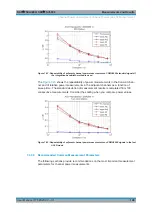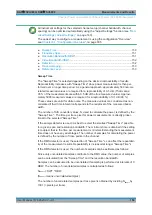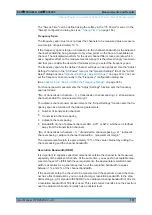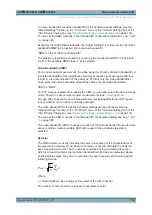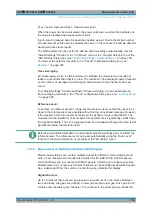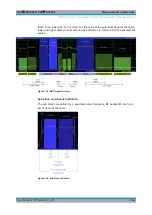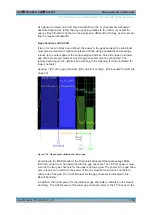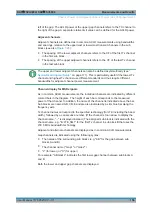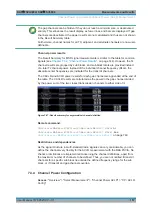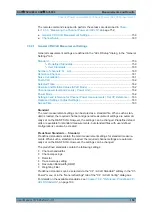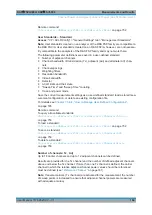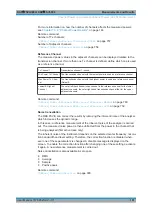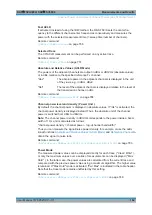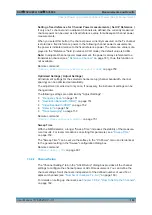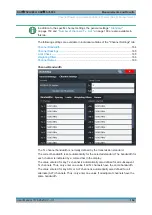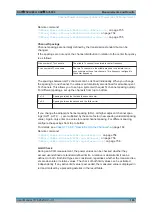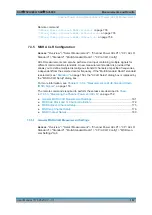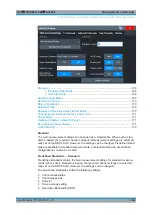
Measurements and Results
R&S
®
FSVA3000/ R&S
®
FSV3000
153
User Manual 1178.8520.02 ─ 01
P
RMS
= power represented by a measurement point
When the power has been calculated, the power units are converted into decibels and
the value is displayed as a measurement point.
In principle, the sample detector would be possible as well. Due to the limited number
of measurement points used to calculate the power in the channel, the sample detector
would yield less stable results.
The RMS detector can be set for the defined channel settings automatically. Use the
"Adjust Settings" function in the "Ch Power" menu or the "General Settings" tab of the
"ACLR Setup" dialog box (see
"Optimized Settings ( Adjust Settings )"
You can set the detector manually in the "Traces" configuration dialog box, see
Trace Averaging
Avoid averaging, which is often performed to stabilize the measurement results but
leads to a level indication that is too low. The reduction in the displayed power depends
on the number of averages and the signal characteristics in the channel to be mea-
sured.
The "Adjust Settings" function switches off trace averaging. You can deactivate the
trace averaging manually in the "Traces" configuration dialog box, see
Reference Level
To achieve an optimum dynamic range, set the reference level so that the signal is as
close to the reference level as possible without forcing an overload message. However,
if the signal-to-noise ratio becomes too small, the dynamic range is also limited. The
measurement bandwidth for channel power measurements is significantly smaller than
the signal bandwidth. Thus, the signal path can be overloaded although the trace is still
significantly below the reference level.
Selecting a predefined standard or automatically adjusting settings does not affect the
reference level. The reference level can be set automatically using the "Auto Level"
function in the [Auto Set] menu, or manually in the "Amplitude" menu.
7.3.3.4
Measurement on Multi-Standard Radio (MSR) Signals
Modern base stations can contain multiple signals for different communication stand-
ards. A new measurement standard is provided for the R&S
FSV/A ACLR measure-
ment that allows you to measure such MSR signals, including non-contiguous setups.
Multiple (also non-) contiguous transmit channels can be specified at absolute frequen-
cies, independent from the common center frequency selected for display.
Signal structure
Up to 18 transmit channels can be grouped in a maximum of 5
sub blocks
. Between
two sub blocks, two gaps are defined: a
lower gap
and an
upper gap
. Each gap in turn
contains two channels (
gap channels
). The channels in the upper gap are identical to
Channel Power and Adjacent-Channel Power (ACLR) Measurement

